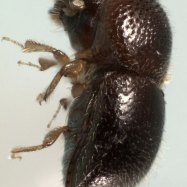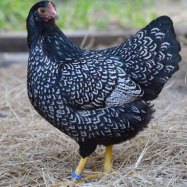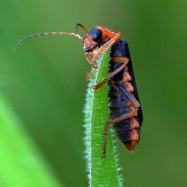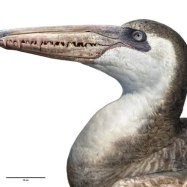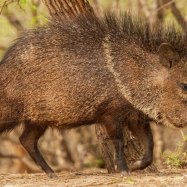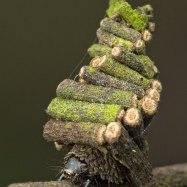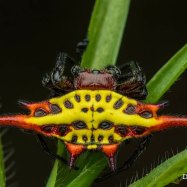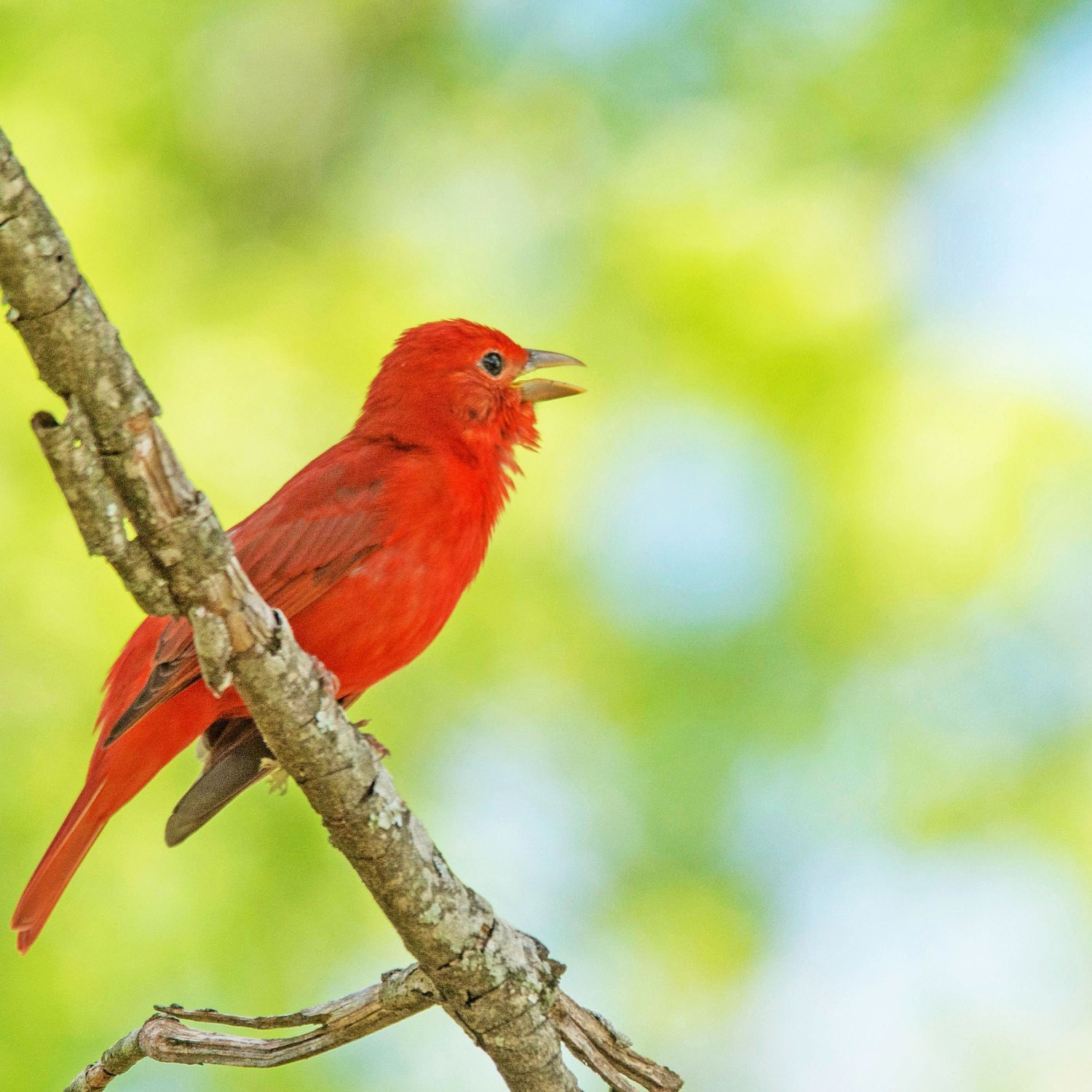
Summer Tanager
16-18 cm
The Summer Tanager (Piranga rubra) is a vibrant songbird found in the Southeastern United States. With a small to medium-sized body measuring 16-18 cm, it belongs to the Cardinalidae family. Its distinct bright red plumage makes it easy to spot among the trees. Keep an eye out for this beautiful bird during your summer walks! #summertanager #songbird #southeasternUS
Animal Details Summary:
Common Name: Summer Tanager
Kingdom: Animalia
Habitat: Deciduous forests, forest edges, open woodlands
The Magnificent Summer Tanager: A Vibrant Songbird of the Americas
The world is filled with a variety of incredible creatures, each with their own unique features and habitats. And among the vast array of bird species, there is one that stands out for its striking appearance and enchanting song – the Summer Tanager.Scientifically known as Piranga rubra, the Summer Tanager, also known as the American red tanager, is a beautiful bird that can be found in North, Central, and South America. Its common name, "Summer Tanager," refers to its habit of breeding and nesting in North America during the summer months Summer Tanager.
Let's take a closer look at this charming bird and learn more about its characteristics, behavior, and habitat.
The Summer Tanager's Taxonomy
The Summer Tanager belongs to the Kingdom Animalia, Phylum Chordata, and Class Aves, making it a member of the animal kingdom, the chordates, and the birds, respectively. Within the bird class, it falls under the order Passeriformes, which refers to perching birds, and the family Cardinalidae, which includes cardinals and grosbeaks.Compared to other bird species, the Summer Tanager has a fairly small taxonomic range, as it is only classified under the order Passeriformes and the family Cardinalidae. However, its unique features and behavior more than make up for its limited classification.
The Summer Tanager's Habitat
The Summer Tanager can be found in a variety of areas, including deciduous forests, forest edges, and open woodlands. These birds prefer relatively open areas, with scattered trees and shrubs, that provide them with ample perches for hunting and nesting.In North America, Summer Tanagers are commonly found in the southeastern region, as well as parts of the Midwest and South. However, during the winter months, they migrate to Central and South America, where they can be spotted in Mexico, Central America, and northern South America Spider Wasp.
Although these birds are widespread throughout their range, they are not particularly common, as they prefer undisturbed habitats and are sensitive to human disturbance. Their population has also been declining due to habitat destruction and pesticide use.
The Summer Tanager's Diet and Feeding Behavior
The Summer Tanager's diet is primarily insectivorous, with a particular preference for wasps, bees, and other flying insects. However, they are also known to feed on fruits and berries, earning them the label of "frugivorous."These birds are skilled hunters and use various techniques to catch their prey, including flying out from a perch to catch a passing insect, hovering to pick insects from foliage, and sometimes chasing prey on the ground.
Unlike other tanagers, Summer Tanagers have a thick, conical beak designed for catching insects, rather than the more slender, pointed beak typically associated with fruit-eating birds.
Moreover, the Summer Tanager's bright red coloration also plays a role in its feeding behavior. Studies have shown that insects are more attracted to the color red, making it easier for these birds to find their prey.
The Summer Tanager's Coloration and Appearance
The Summer Tanager is known for its vibrant, eye-catching coloration. In fact, its bright red plumage is one of the main characteristics that distinguish it from other North American birds. However, their coloration is not consistent throughout their lifespan.Breeding males have a bright red plumage, while non-breeding males and females have a yellow-green coloration. This stark contrast in color between breeding and non-breeding birds has earned the Summer Tanager the nickname "the changing tanager."
The reason for this color change is still not fully understood, but it is believed to help non-breeding males and females blend in with their surroundings to avoid predators. Additionally, it may also serve as a form of camouflage when foraging for insects.
Apart from their striking coloration, Summer Tanagers have a small to medium-sized body, reaching a length of 16-18 cm. They have a rounded head, a thick, conical beak, and a long tail. Their wings are relatively short and broad, giving them a somewhat chunky appearance.
The Summer Tanager's Behavior and Reproduction
Summer Tanagers are solitary birds, often seen foraging by themselves or in pairs during mating season. They are also predominantly diurnal, meaning they are active during the day. However, some birds in the southern part of their range have been observed foraging at night.During the breeding season, male Summer Tanagers are known for their beautiful and complex songs, which they use to attract females and mark their territory. Their songs are loud, clear, and often repeated for long periods, making them easy to locate in their habitat.
These birds are monogamous and form pair bonds that last through the breeding season. Females usually lay 3-5 eggs in a nest made of twigs, leaves, and grass, which they build in the fork of a tree. Both parents take turns incubating the eggs and feeding the young.
Once the eggs hatch, the parents continue to work together to feed and care for their chicks until they become fledglings and are ready to leave the nest.
The Summer Tanager in American Culture
The Summer Tanager has made its mark not only in the natural world but also in American culture. In the United States, it is often referred to as the "Summertree bird" or "Tie-tie" due to its distinctive call that sounds like a short "tie" repeated twice.Many indigenous cultures in Central and South America also have various legends and myths revolving around the Summer Tanager, often portraying it as a symbol of courage, strength, and vitality.
In addition to its cultural significance, the Summer Tanager is also crucial to the ecosystem as an insect predator and disperser of fruit seeds.
The Summer Tanager's Conservation Status
Despite their striking appearance and importance in their ecosystem, the Summer Tanager is listed as a species of least concern by the International Union for Conservation of Nature (IUCN). However, this does not mean that they are free of threats.Their population has been decreasing due to habitat destruction and pesticide use, which affects both their nesting habitats and food source. The widespread use of pesticides has also had a significant impact on their prey, causing a decline in insect populations.
To preserve this gorgeous bird and its habitat, it is essential to reduce the use of pesticides and promote conservation efforts in their range.
The Fascinating Summer Tanager: A True Wonder of Nature
In conclusion, the Summer Tanager is an extraordinary bird with a dazzling appearance, charming song, and unique behavior. Its presence is a testament to the diverse and wondrous creatures that inhabit our planet.Despite the challenges facing this species, it continues to thrive and grace its range with its vibrant beauty and melodious songs. Let us appreciate and protect this magnificent bird and all the other creatures that share our world.

Summer Tanager
Animal Details Summer Tanager - Scientific Name: Piranga rubra
- Category: Animals S
- Scientific Name: Piranga rubra
- Common Name: Summer Tanager
- Kingdom: Animalia
- Phylum: Chordata
- Class: Aves
- Order: Passeriformes
- Family: Cardinalidae
- Habitat: Deciduous forests, forest edges, open woodlands
- Feeding Method: Insectivorous, frugivorous
- Geographical Distribution: North America, Central America, South America
- Country of Origin: United States
- Location: Southeastern United States
- Animal Coloration: Bright red (breeding male), yellow-green (non-breeding male and female)
- Body Shape: Small to medium-sized songbird
- Length: 16-18 cm
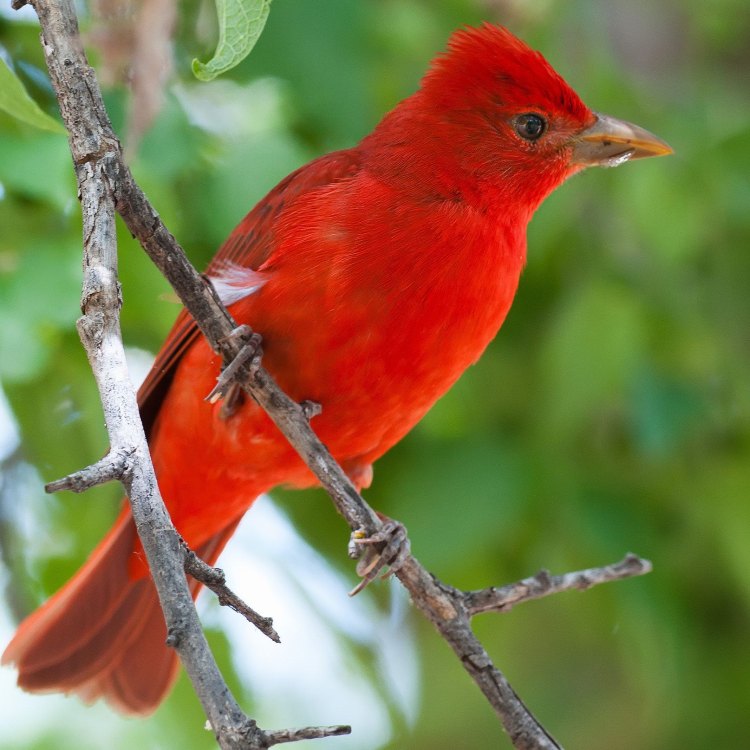
Summer Tanager
- Adult Size: Small
- Average Lifespan: 5-10 years
- Reproduction: Monogamous
- Reproductive Behavior: Nest in trees, typically in the fork of a branch
- Sound or Call: Songs are often described as a series of rich, warbling notes
- Migration Pattern: Long-distance migratory
- Social Groups: Solitary, sometimes found in small groups during migration
- Behavior: Active foragers, feed by gleaning insects from foliage or catching them in the air
- Threats: Habitat loss, fragmentation, and degradation
- Conservation Status: Least Concern
- Impact on Ecosystem: Important seed dispersers for many tree species
- Human Use: Birdwatching, ecotourism
- Distinctive Features: Bright red plumage of breeding males
- Interesting Facts: The Summer Tanager is the only entirely red bird found in North America
- Predator: Various predators including snakes, hawks, and owls
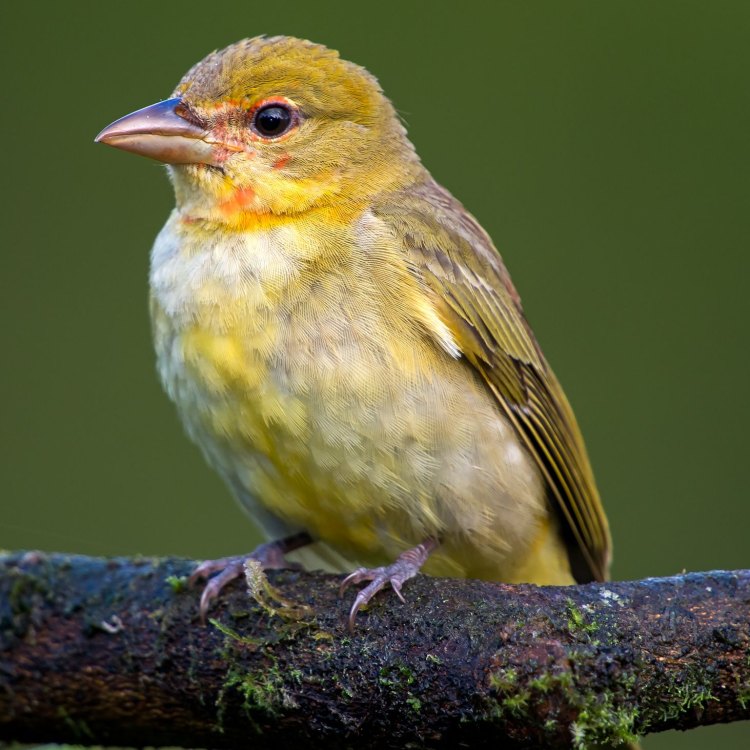
Piranga rubra
The Summer Tanager: A Vibrant and Vital Bird of North America
As the sun rises on a warm summer morning, a flash of bright red catches your eye from the trees above. It's a summer tanager, perched on a branch and belting out a series of rich, warbling notes. This small bird may seem unassuming, but it plays a crucial role in its ecosystem and has captured the attention of birdwatchers and ecotourists alike. In this article, we will explore the unique features and behaviors of the summer tanager and its important role in North America's diverse wildlife PeaceOfAnimals.Com.The summer tanager (Piranga rubra) is a small bird, measuring approximately 7.5 inches in length, and weighing only about 1.2 ounces. Its petite size may be deceiving, but this bird has an impressive average lifespan of 5-10 years. It is a monogamous species, with pairs mating for life.
These vibrant red birds are found in various habitats, including forests, woodlands, and even urban areas with plenty of trees. They are widely distributed throughout the southern and eastern United States, and parts of Mexico, Central America, and South America. The summer tanager is also a long-distance migratory bird, spending its winters in South America and returning to its breeding grounds in North America during the summer months.
Nestled in trees, typically in the fork of a branch, is where the summer tanager chooses to make its home Sandworm. As a solitary bird, this choice of nesting location provides a safe haven from potential predators. However, during migration, they may be found in small groups, stopping for food and rest along their journey.
One of the most distinctive features of the summer tanager is the bright red plumage of the breeding males. The females, on the other hand, have a more subdued yellow-green coloring, making them less conspicuous. The bright red of the males is a result of their diet, which primarily consists of insects, fruits, and berries. It is through these dietary choices that they obtain the necessary pigments to create their vibrant appearance.
The summer tanager is also an active forager, spending most of its day gleaning insects from foliage or catching them mid-air. Its preferred method of feeding is by flycatching, which is when they catch insects while in flight. This species' unique foraging behavior makes them crucial in keeping insect populations in check, which is beneficial to the ecosystem and agriculture.
The bright red plumage of the summer tanager makes them an easy target for predators like snakes, hawks, and owls. However, they have developed a unique defense mechanism against these predators. When threatened, they can release a foul-smelling chemical from their oil gland, which gives them a distinct odor, making them less appealing to potential predators.
Unfortunately, the summer tanager, like many other bird species, faces threats to its survival. Habitat loss, fragmentation, and degradation due to human activities are the primary reasons for declining populations in some areas. These activities often disrupt the birds' breeding and nesting cycles, leading to a decrease in their numbers. Additionally, excessive use of pesticides can also have a detrimental effect on the summer tanager's food sources, causing their populations to decline.
Despite these threats, the summer tanager is currently listed as "Least Concern" on the International Union for Conservation of Nature (IUCN) Red List. However, conservation efforts are crucial in maintaining stable populations of this species and preventing any future declines. Measures such as preserving and restoring habitat, limiting pesticide use, and creating awareness about the importance of these birds are necessary to ensure their continued survival.
Apart from their vital role in the ecosystem, the summer tanager also has cultural and recreational significance. These birds are a popular sight among birdwatchers and ecotourists. Their bright red plumage and melodious songs make them a sought-after species for bird enthusiasts. Ecotourism, which involves responsible travel to natural areas, is a growing industry that promotes bird conservation and supports local communities.
Interestingly, the summer tanager is the only entirely red bird found in North America, making it a unique sight to behold. Along with its vibrant appearance, this species also has a unique migration pattern, traveling thousands of miles to its wintering grounds in South America. This long-distance migration is a feat that is both impressive and critical to the survival of the species.
Moreover, the summer tanager plays an essential role in its ecosystem as an important seed disperser for many tree species. As they forage for food, they also inadvertently spread seeds, helping to maintain the biodiversity of the forest. This contribution is crucial to the survival of many tree species and other plants, forming an intricate web of ecological relationships.
In conclusion, the summer tanager is a small but mighty bird that plays an important role in North America's diverse wildlife. Its bright red plumage, unique foraging behavior, and vital role in the ecosystem make it a truly remarkable species to observe. While they may face threats to their survival, with proper conservation efforts, we can ensure that future generations can continue to witness the beauty and importance of the summer tanager. So, the next time you see a flash of bright red in the trees, take a moment to appreciate the vibrant and vital summer tanager.
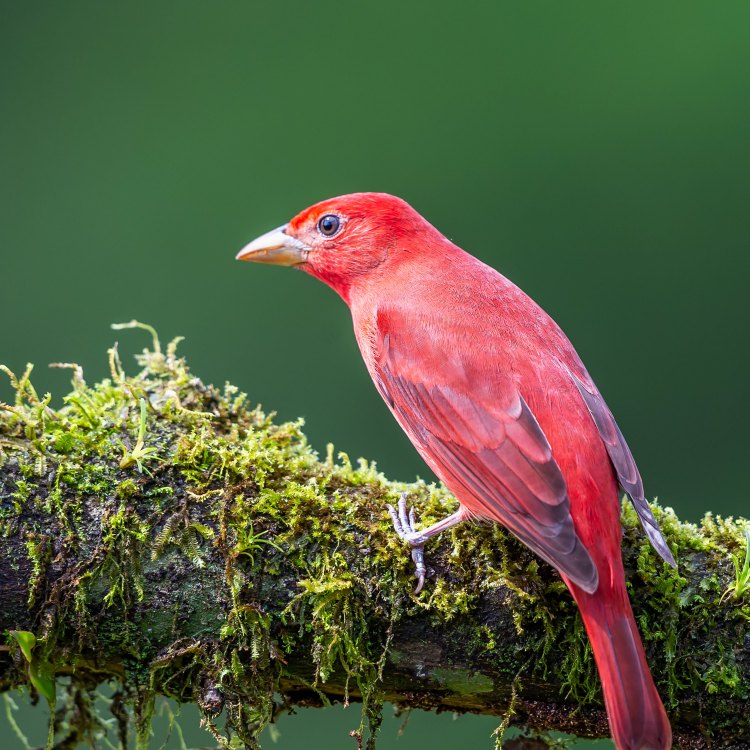
The Magnificent Summer Tanager: A Vibrant Songbird of the Americas
Disclaimer: The content provided is for informational purposes only. We cannot guarantee the accuracy of the information on this page 100%. All information provided here may change without prior notice.

